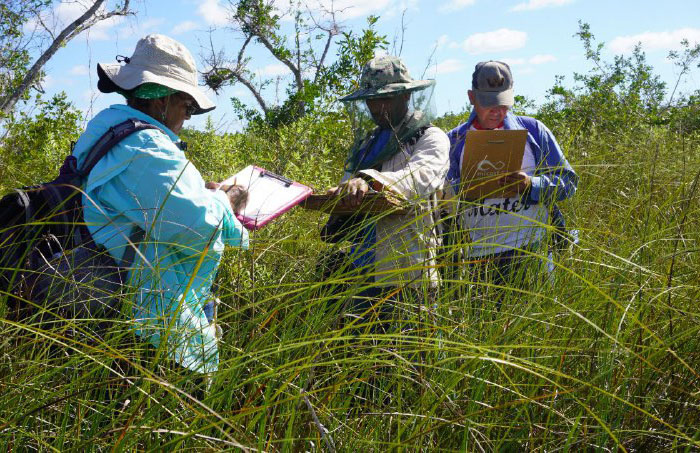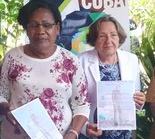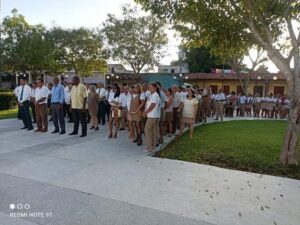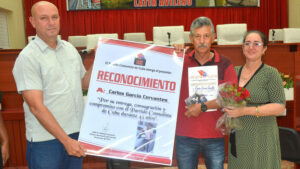The assessment of the state of biodiversity in segments of wetlands on the southern coast of Cuba will provide valuable information for the rehabilitation of these ecosystems by the international project Mi Costa, with the aim of favouring adaptation to climate change.
Doctor of Science Ramona Oviedo Prieto, senior naturalist curator of the National Herbarium of Cuba and head of the expedition to characterise these environments, told the Cuban News Agency exclusively that botanists and zoologists from the Ecology and Systematics and Tropical Geography institutes are gathering data on the flora and fauna, and the presence of invasive species, fundamentally.
The specialists diagnose the state of conservation and biological diversity in forests and swamp grasslands, and in mangroves, as well as in the transition spaces between these ecosystems, where man generally interacts with the greatest force.
They also determine the main impacts that these areas have suffered and how they affect ecosystem services, as well as investigating the original landscapes and natural and social life, in order to obtain essential information to guide the management, control and monitoring actions planned by Mi Costa.
Through exchanges with project actors in the provinces of Ciego de Avila, Camagüey and Granma and the inhabitants of the direct intervention sites, located in the human settlements of Júcaro, Playa Florida, Santa Cruz del Sur and Manzanillo, elements of interest for the research are obtained, considering the value of popular wisdom and the experience of the locals.
Oviedo Prieto appreciated the welcome of the inhabitants of Júcaro and the possibilities offered by the meeting to provide them with information on the particularities of the ecosystems and how to manage them in a sustainable way, in order to contribute to the recovery and, therefore, to the improvement of their functions.
The botanists and zoologists in the evaluation of the southern coast of Avila highlighted the importance of the adequate treatment of solid waste to minimise the negative impact on the environment, and insisted on the efficient management of underground and surface water resources as a guarantee of the vitality of the ecosystems.
They recommended the community to achieve greater integration in the actions of the international project Mi Costa, which aims to increase the capacity to respond to the threats of climate change, through ecosystem-based adaptation, which includes the restoration of wetland functions, as well as promoting sustainable lifestyles.
Other suggestions were aimed at controlling invasive species to maintain biological diversity, controlling forest fires, and rescuing flora and fauna of great significance to the locality, including the júcaro and the jutía conguina, the latter restricted to the Jardines de la Reina National Park protected area, although its presence in the southern wetlands of Avila has not been ruled out.
The renowned specialist from the Cuban National Herbarium also emphasised the importance of promoting the cultivation of medicinal and honey plants, as well as fruit trees, in the community, for their contribution to food self-sufficiency, health and the well-being of the population.
Carried out as part of the international project Mi Costa – implemented by the Environment Agency, with funding from the Green Climate Fund and the Cuban government, and advised by the United Nations Development Programme – the expedition is currently travelling through the areas defined in the province of Camagüey and this week will move on to the Granma portion.
Subsequently, a similar study will be carried out in the other southern wetland segment where the project is taking place, located between the territories of Pinar del Río and Mayabeque.




